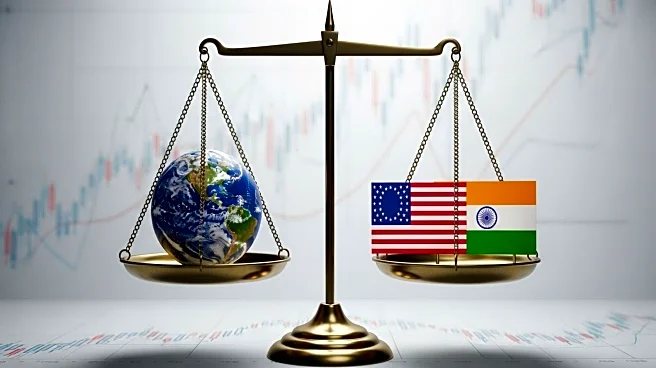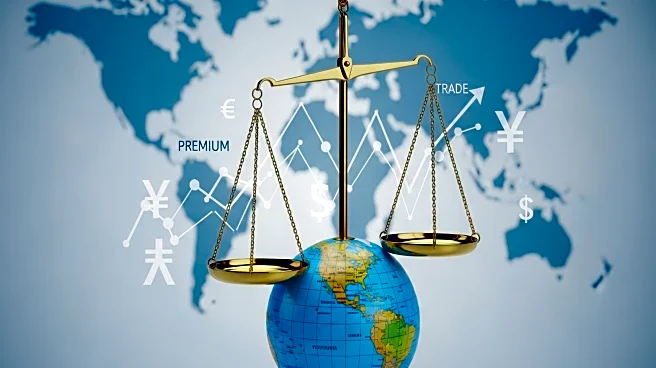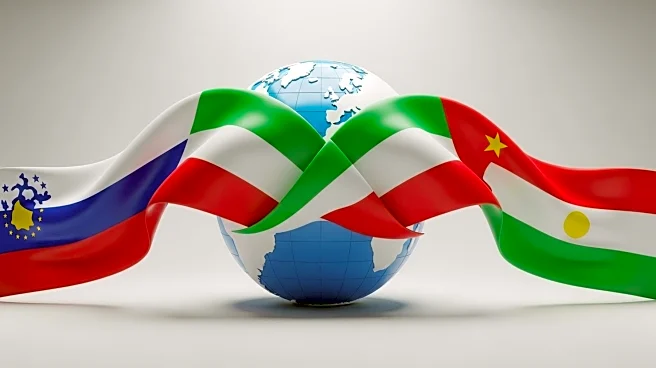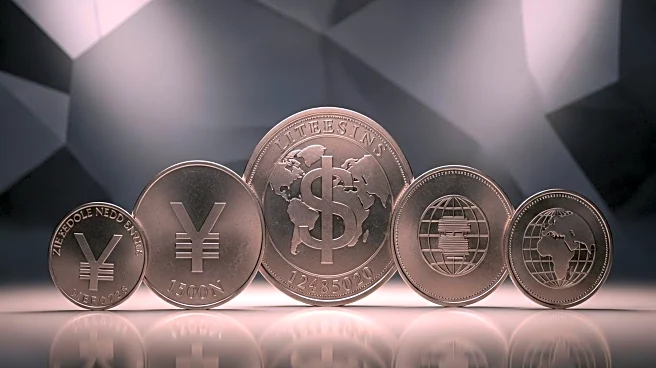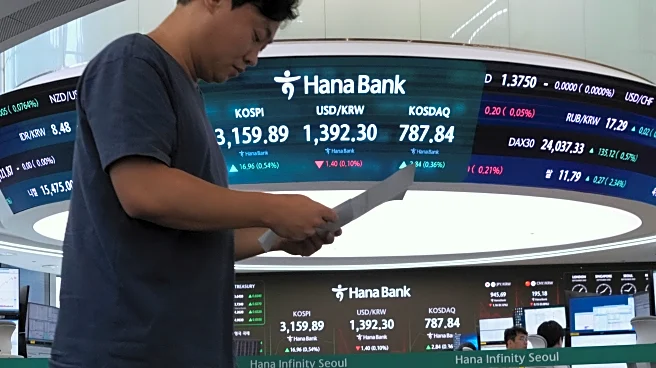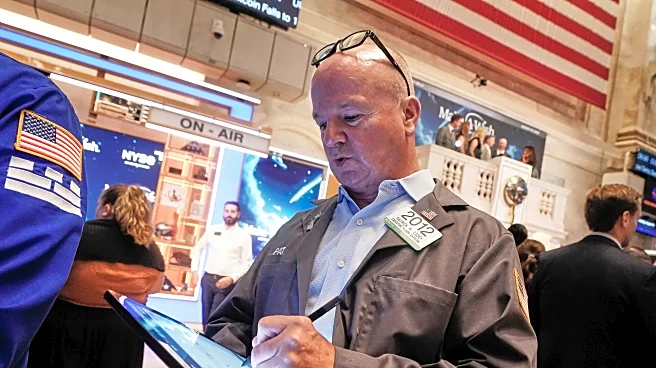What is the story about?
What's Happening?
In August 2025, the United States imposed a 50% tariff on Indian goods, significantly impacting trade dynamics between the two nations. This move has exposed vulnerabilities in India's export-dependent sectors, particularly textiles, gems and jewelry, and leather, which face a competitive disadvantage compared to countries like Vietnam and Bangladesh. The tariffs threaten $48.2 billion in Indian exports and risk 400,000 jobs, potentially leading to a 70% decline in these industries. In response, India has implemented fiscal support measures, GST reforms, and is seeking to diversify its trade partnerships, including a pact with the UK through the India-UK CETA. Despite these efforts, the U.S. remains a dominant market for India, with $87 billion in exports at risk.
Why It's Important?
The tariff escalation by the U.S. is part of a broader strategy to pressure India over its energy ties with Russia and alignment with BRICS nations. This has implications for global supply chains, as the U.S. aims to reorient them, affecting emerging market investors. Sectors like pharmaceuticals and textiles, which have significant U.S. export shares, are particularly vulnerable to these policy shifts. However, India's domestic demand-driven growth and structural reforms offer some stability. Meanwhile, countries like Vietnam and Mexico may benefit from U.S. trade diversion, presenting alternative investment opportunities. The situation underscores the need for emerging market investors to navigate volatility and consider diversified approaches.
What's Next?
India faces the challenge of balancing its strategic autonomy while maintaining ties with the U.S., securing energy from Russia, and managing its relationship with China. The MSCI Emerging Markets Index trades at a significant discount to the S&P 500, suggesting potential value in India's resilient sectors like IT services and pharmaceuticals. However, short-term volatility is expected, as evidenced by recent declines in Indian stock indices following tariff announcements. Investors must prioritize sectoral diversification and geopolitical agility to adapt to the evolving trade landscape.
Beyond the Headlines
The tariff escalation highlights deeper geopolitical tensions and the complexities of global trade relationships. India's efforts to diversify its trade partnerships reflect a strategic shift towards maintaining autonomy while navigating international pressures. This situation may lead to long-term shifts in global trade patterns, with emerging markets adapting to new realities. The ethical and cultural dimensions of trade policies, particularly in labor-intensive industries, also warrant consideration as countries balance economic growth with social impacts.
AI Generated Content
Do you find this article useful?
